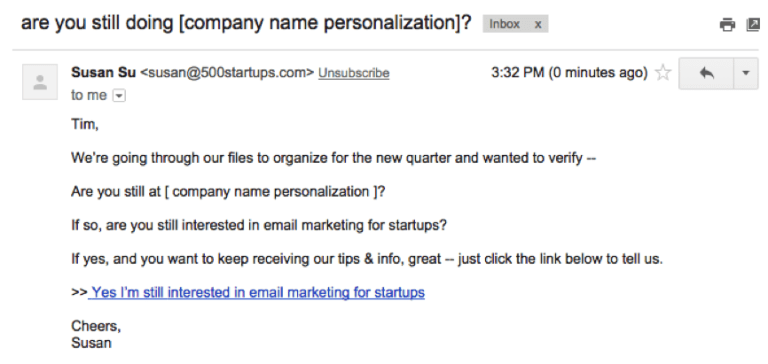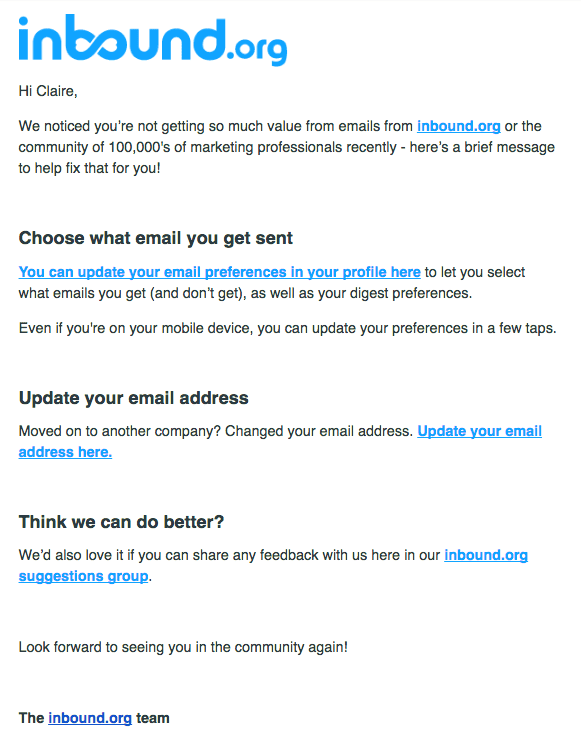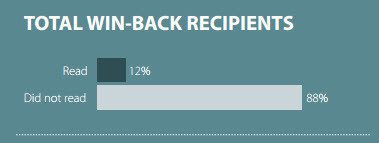We spend a lot of time growing our lists. We create irresistible content upgrades, compelling lead magnets, encourage list signups straight from Twitter cards and Facebook posts, and try to drive all our growth activities back to an opt-in. It’s the glue that holds together the inbound methodology.
But while we’re spending all that time growing lists and trying to pull in new subscribers, what about all the zombie subscribers on your list? They signed up for a reason, but they’ve stopped engaging or maybe never did.
Can you still be helpful for them? How can you win them back?
Understanding Why Email Subscribers Lose Interest
It’s hard to imagine shrugging off a big percentage of the audience members snoring away during a presentation, so it’s understandable to get a little put out by falling open rates when you put a lot of hard work into your content.
That said, it’s useful to remember how you consume content yourself. Do you sign up for things and then get overwhelmed? Do you sometimes intend to come back to emails and forget? Do you see irrelevant or boring subject lines and your mind drifts elsewhere?
Assuming you’re not the one who let your list go cold because you didn’t send any emails for a stretch (it happens – no judgment from us!), there’s a ton of reasons list subscribers could cease interacting with your emails.
Just a few reasons to look at:
- They’re not receiving it (this can come up if you recently switched email service providers – always check your delivery rates!)
- Something about their email configuration doesn’t let your email provider record an “open” (it’s worth using one of the industry leaders to make sure you’re optimizing for this)
- Signed up for one reason and they’re now receiving emails about unrelated subjects (could either be a value proposition issue or a segmenting issue on your part)
- Signed up for a very specific reason (segmenting issue)
- Put off by something in your email communication (split testing comes in handy for solving these types of issues)
- Overwhelmed by the amount of email in their inbox
- Too busy to read now
- And a host of other reasons
At the end of the day, though, you could spend (or waste) a lot of time trying to understand human psychology in a way that just doesn’t scale or pay dividends.
So while it’s a good idea to come up with a few theories to help you get started, what you really need to do is pick a hypothesis or two and just start a win-back campaign. Then you can measure what’s working and innovate from there.
Why to Spend Time and Effort Reactivating Dormant Subscribers
It’s worth it to spend time trying to recover disengaged email subscribers.
Consider your cost of acquisition for a brand-new subscriber, and compare that against the costs of running a few “win-back” campaigns to see if you can reignite interest in people who already said, “Yes, I’ll give you my email address and let you send information straight to my inbox.”
Recovering cold subscribers goes straight to the heart of why you build lists in the first place:
1. You own the channel
Paid ads for retargeting campaigns cost you money. For the same reason that it’s good to publish your own content on your own blog channel, it’s useful to have a list of subscribers that you own. It’s also free to communicate with this list (well, minus your email service provider costs and your labor, but you get the idea).
2. It’s your direct link to your prospects
By the same token, it’s a way you can fully control the messaging to your prospects. Your messages land in their personal inboxes, which is a much more direct-to-eyeballs route than most of your other channels, and requires a low-barrier action (just a click).
Implementing a Win-Back Campaign
If you’re thinking it’s time to reach out to folks who aren’t opening or clicking on links inside your emails, then it’s time for a win-back campaign.
1. Identify target segment
Win-back emails always go to your inactive segment, but that doesn’t mean the same thing for everyone.
So first, you’ll need to define what “inactive” means to you. The industry standard is “no interactions for 28 days,” but that may not mean a thing when it comes to your customer cycle.
A few common ways to segment include:
- No opens in X days
- No clickthroughs in X days
- Never opened an email after signup
- Never clicked after signup
2. Prepare win-back email campaign
Characteristics of a successful win-back email include:
- Personal and helpful tone
- Address the reason you’re sending it
- Make no assumptions – make sure you’re clear about who you are
- A reason to engage again – generally, educational benefits are better than discounts or other sales-y techniques
- A way to unsubscribe directly – or an additional opt-in
- Remember that there’s a good chance it’ll be opened on a mobile device (half of all emails are these days, and 65% of consumers start their buyer’s journey from a mobile device, according to Marketo)
Susan Su at 500 Startups included this example in a post, where she demonstrates a few of these tactics, including a helpful tone and focusing on benefits to the recipient:

The folks at Inbound.org also use effective win-back emails, such as this one I received recently:

3. Measure your results and evolve the campaign
Like all the best marketing campaigns, win-back campaigns are, at heart, investigations. You’ll need to measure to see if there are any changes in engagement patterns for your previously “dead” list. If you aren’t getting conclusive results, you can shift to another hypothesis or try other win-back emails.
Be careful of trying too many reactivation campaigns in a short period of time, though – that could unintentionally drive away people who might have thought about re-engaging at some point.
A Few More Notes About Reactivation
As you’re building out your first win-back campaign or working on other email reactivation plays, there are a few other things to think about that might not come up right away:
1. Don’t focus on your win-back email stats alone
Here’s some telling stats from Return Path:
- Win-back emails have a pretty dismal open rate (exhibit A from a Return Path study below):

- 75% of subscribers clicked on a subsequent message within 89 days of receiving a win-back email
The takeaway? People take a while to wake from the dead when it comes to email reactivation, so give people time.
2. Consider combining paid retargeting with your win-back campaign
If you’re having trouble with using your actual email as a reactivation channel, try adding a paid retargeting element. Show some ads to the lapsed folks on your list to try to remind them you exist and why they wanted to subscribe in the first place. This may pay off in your email channel.
3. If it’s not meant to be, let them go
Be ready to move on at some point. Based on what you know about your customer cycle, that could be six months of no interaction, or a year or anything in between – but at some point, you should remove them yourself.
Some marketers recommend keeping the emails for use in retargeting campaigns, though continuing to target ads at people who have shown zero interest in your content in a personal channel like email seems like a potential waste of money.
More importantly, continuing to send emails to recipients that show no signs of life can affect your standing with your email service provider and generally add a lot of dead weight to your list.
The only time this may not apply is with a small and hard-won email list – think a list of C-suite executives – where a single engagement may be enough to provide decent ROI for your work on that list. If you have something like that – a highly valuable list that’s pretty cold – you might want to segment it off and create some special re-engagement campaigns that you can run once a quarter or even less often.
The most important thing to remember throughout every step of your re-engagement efforts: be helpful.
Don’t trick email subscribers into staying on your list and definitely don’t overstay your welcome. If you lose subscribers during your win-back campaign or if they continue to ignore your communications and you need to remove them yourself, think of it as motivation. You’ll just need to win them back through your growth tactics again.
While email is a nice channel to engage with prospects because you own it and you get the benefit of the opt-in signal, your customer journey likely won’t be linear. If you need to occasionally reactivate or win back your subscribers, take it as a learning opportunity and don’t overreact based on statistically small numbers.
The prospect and customer relationship with products and companies today rarely goes in a nice, straight line from the top of your funnel to the bottom.
Did your list go cold because you don’t have time to send useful content packed with opt-in opportunities? Not sure why your audience isn’t engaging with your content anymore? We create and send engaging posts just like this one to your list every week. Let’s talk!